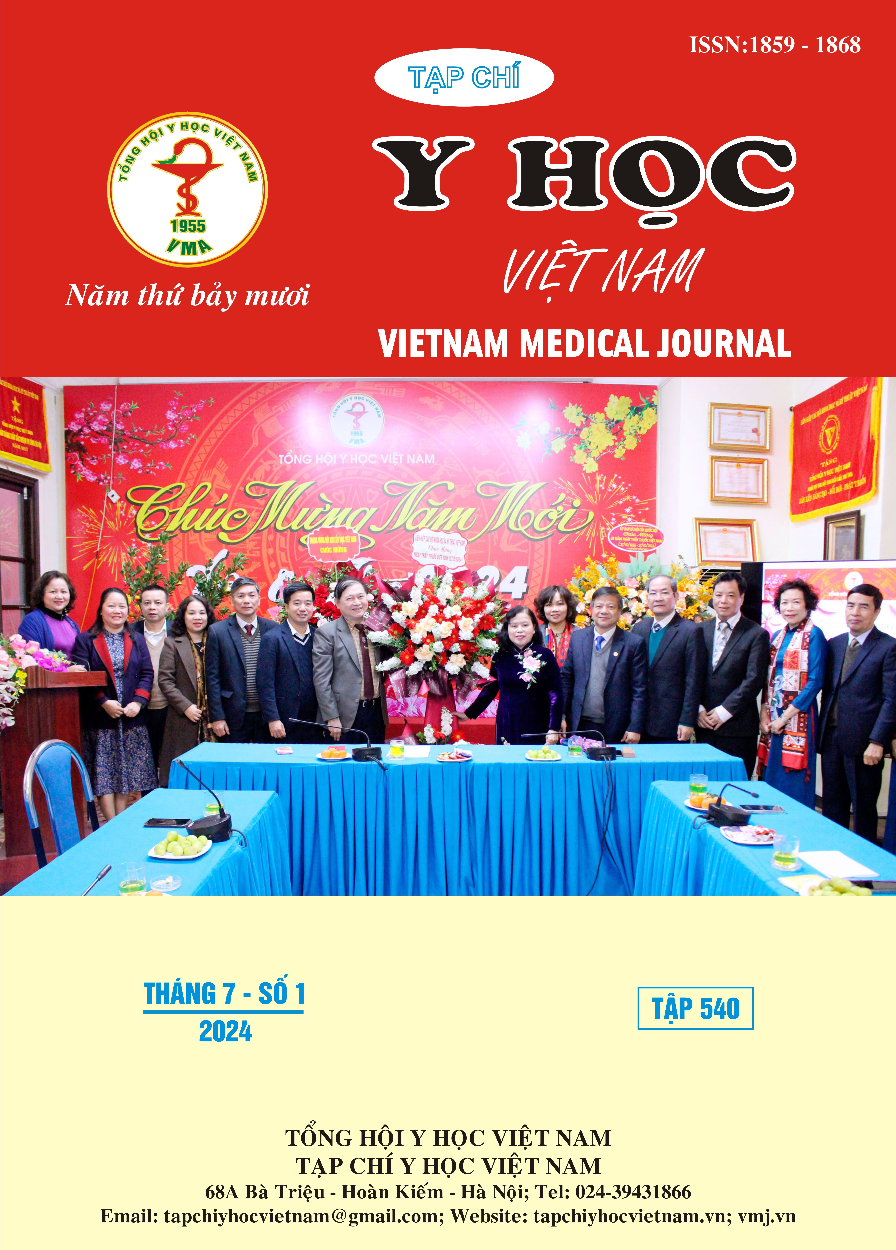AMBULATORY BLOOD PRESSURE DIPPING PATTERN IN PATIENTS WITH CHRONIC KIDNEY DISEASE AND CONTROLLED BLOOD PRESSURE
Main Article Content
Abstract
Introduction: Chronic kidney disease (CKD) is a prevalent health condition. Optimal control of hypertension in this population is crucial for improving outcomes. Blood pressure dipping is an important parameter assessed through 24-hour ambulatory blood pressure monitoring, shown to be associated with mortality and cardiovascular events. Methods: A data-revisited descriptive study was conducted on 178 CKD patients ranging from stage 3 to stage 5 who achieved office blood pressure targets. 24-hour ambulatory blood pressure monitoring was performed to evaluate blood pressure dipping. Results: 15.2% of participants had a normal dipping pattern and 2.2% had deep dipping. Among those with abnormal blood pressure dipping, 53.9% had blunted dipping and 28.7% had reverse dipping. There was a statistically significant difference in the prevalence of normal blood pressure dipping between the controlled blood pressure group and the masked uncontrolled blood pressure group (26.4% vs. 3.4%, p < 0.001). Conclusion: The majority of CKD patients exhibit abnormalities in blood pressure dipping, with a predominance occurring in the group with masked uncontrolled hypertension.
Article Details
Keywords
Blood pressure dipping, chronic kidney disease, ambulatory blood pressure monitoring
References
2. Zhang L, Wang F, Wang L, et al. Prevalence of chronic kidney disease in China: a cross-sectional survey. Lancet. 2012 Mar 3;379(9818):815-22. doi: 10.1016/S0140-6736(12)60033-6.
3. Whelton PK, Carey RM, Aronow WS, et al. 2017 ACC/AHA/AAPA/ABC/ACPM/AGS/ APhA/ASH/ ASPC/NMA/PCNA Guideline for the Prevention, Detection, Evaluation, and Management of High Blood Pressure in Adults: Executive Summary: A Report of the American College of Cardiology/American Heart Association Task Force on Clinical Practice Guidelines. Hypertension. 2018 Jun;71(6):1269-1324. doi: 10.1161/ HYP.0000000000000066.
4. Williams B, Mancia G, Spiering W, et al; ESC Scientific Document Group. 2018 ESC/ESH Guidelines for the management of arterial hypertension. Eur Heart J. 2018 Sep 1;39 (33):3021-3104. doi: 10.1093/eurheartj/ehy339.
5. Gargiulo R, Suhail F, et al. Hypertension and chronic kidney disease. Dis Mon. 2015 Sep;61(9): 387-95. doi: 10.1016/j.disamonth. 2015.07.003.
6. Horowitz B, Miskulin D, Zager P. Epidemiology of hypertension in CKD. Adv Chronic Kidney Dis. 2015 Mar;22(2):88-95. doi: 10.1053/ j.ackd.2014.09.004.
7. Nguyễn Thành Sang. Khảo sát thực trạng tăng huyết áp không kiểm soát ẩn giấu trên bệnh nhân cao tuổi đang điều trị tăng huyết áp tại phòng khám lão Bệnh viện Nhân dân Gia Định. Luận văn tốt nghiệp bác sĩ nội trú, 2018, Đại học Y Dược, Tp. Hồ Chí Minh.
8. Stevens PE, Levin A; Kidney Disease: Improving Global Outcomes Chronic Kidney Disease Guideline Development Work Group Members. Evaluation and management of chronic kidney disease: synopsis of the kidney disease: improving global outcomes 2012 clinical practice guideline. Ann Intern Med. 2013 Jun 4;158(11): 825-30. doi: 10.7326/0003-4819-158-11-201306040-00007.
9. Van Minh H, Van Huy T, Long DPP, et al. Highlights of the 2022 Vietnamese Society of Hypertension guidelines for the diagnosis and treatment of arterial hypertension: The collaboration of the Vietnamese Society of Hypertension (VSH) task force with the contribution of the Vietnam National Heart Association (VNHA): The collaboration of the Vietnamese Society of Hypertension (VSH) task force with the contribution of the Vietnam National Heart Association (VNHA). J Clin Hypertens (Greenwich). 2022 Sep;24(9):1121-1138. doi: 10.1111/jch.14580.
10. Agarwal R. Albuminuria and masked uncontrolled hypertension in chronic kidney disease. Nephrol Dial Transplant. 2017 Dec


